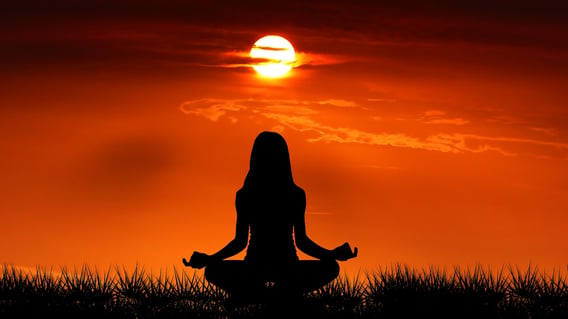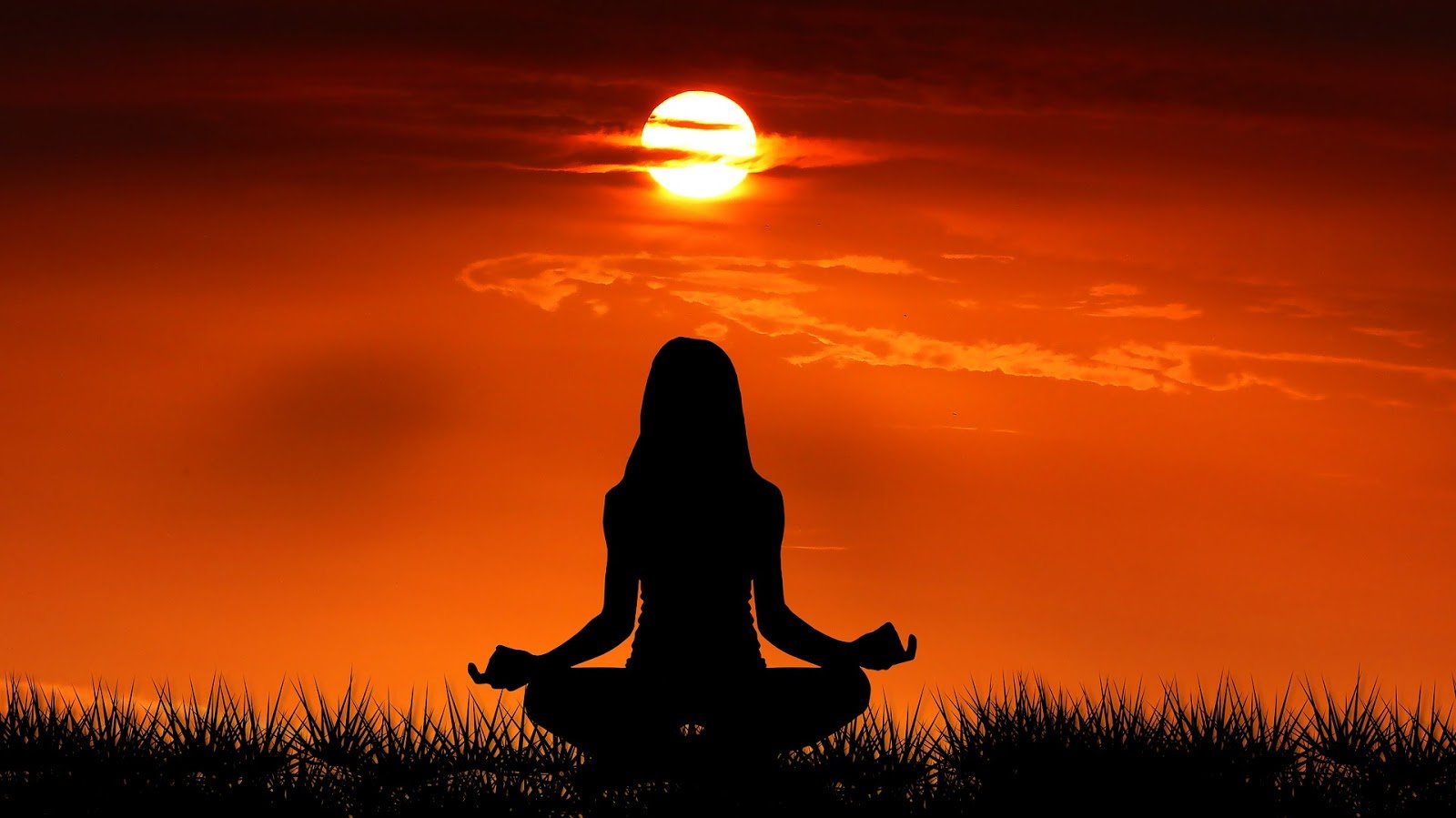Svadhyaya: Self-Study

Svādhyāya: Self-Study
Svādhyāya is ‘self-study’, recommended by the Yoga Sūtras. The second chapter of Yoga Sūtras defines Kriyā yoga as “तपः-स्वाध्याय-ईश्वरप्रणिधानानि क्रियायोगः”. Svādhyāya is an integral part of Kriyā Yoga Svādhyāya is ‘self-study’, recommended by the Yoga Sūtras. – because one is not in yoga if they are not observing themselves and learning from it. Svādhyāya is also the 4th Niyama (rule) recommended by the Yoga Sūtras. In addition, Svādhyāya is mentioned in various other chants in our tradition.
Svādhyāya may include: (i) simple self-observation during āsana-prānāyama practice; (ii) observing one’s interactions with others; (iii) observing oneself with respect to studying the śāśtras, itihāsas and purāṇas; or (iv) viewing oneself in the light of authoritative texts. Through interactions with self, others, as well as the śāśtras, one is able to improve themselves and evolve spiritually. Although Svādhyāya means simply observing objectively, the act of observing itself changes one’s behaviors. Svādhyāya is always an objective observation. It is the training that the mind undergoes everyday to get to the state of Upekśa or Sākṣi bhāvana – a state of equanimity where the mind is not tossed about helplessly by the vicissitudes of life.
The yoga sūtras talk of Upekśa being one of the subtle states recommended to be practiced in order to help calm the mind, along with Maitri, Karuna and Mudita. The sūtra says to practice these for चित्तप्रसादनम्, soothing of the mind, from the various emotions (negative as well as positive) that arise…
मैत्री करुणा मुदितोपेक्षाणां सुखदुःख पुण्यापुण्यविषयाणां भावनातः चित्तप्रसादनम् ॥ (YS – 1.33)
Upekśa is the attitude to be practiced during svādhyāya. When one is able to simply observe without judgment, the other three attitudes come into play automatically – one starts to understand, appreciate and love oneself. Obviously, it is difficult to be in this state all the time in this modern world, but it all can start on the mat. If we can train consistently, every day, and be in this state starting with ourselves first, even for that short time, then at the very least, the amplitude of the mind’s swings is tempered.
Observer or being objective in the Western sense is very different. It means not bringing emotions into the picture or keeping one’s emotions out of the picture.
In Indian culture, getting to the state of an objective observer, or sākṣi, is so much deeper, and a longer process too– one evolves to a state where those emotions/reactions do not even arise within. This means that something happening on the outside has absolutely no effect on the state of mind.
समः शत्रौ च मित्रे च तथा मानापमानयोः ।
शीतोष्ण-सुख-दुःखेषु समः सङ्ग-विवर्जितः ॥ (BG – 12.18)
Being equally unaffected by whether someone cares for you or does you harm, in honor or dishonor, cold or heat, etc. This and many other verses from the Bhagavad Gita, especially in Chapter 2, talk of the importance of being in a state of equanimity. This is in the true sense of “sākṣi” or loosely, a witness. A lot of chants other than the Bhagavad Gīta and the Yoga Sūtras, also mention sākṣi as the highest state to be in, because when the mind is undisturbed, and cannot be pulled outward by external triggers, it rests within, at the Source of all Creation.
How then do we go about training?
-
During your yoga practice observe, observe, observe! Objectively watch your breath and body movements alone. Take their support to help the mind stay inward. Look at yourself in wonder; this machinery we have been blessed with is so intricate, so complex, yet so simple. The processes that happen within, in themselves are not magic, they are simple processes like diffusion, ion transfers, and catalyzed chemical reactions; yet they all happen so beautifully, so well-choreographed, like a perfect symphony – and that is what makes it so complex. While we may not see all the intricate processes, the results of those processes are evident on our bodies – in terms of the urge to take an inhalation or exhalation, the heat generated during āsana practice, the sensation of thirst, the extension/flexion of muscles as we will ourselves to do an āsana, etc.
-
Know that the patterns of the mind manifest on the body. Observe how you are performing your āsanas. See if you are compensating for weaker body parts, by buckling other parts, not stretching as much as your body will allow, or trying to practice more difficult āsanas before mastering simpler ones. All of these indicate the patterns of your mind. Maybe you rush in to compensate where others fall short? Maybe you take on burdens that are not yours? Maybe you use too many shortcuts? Do not analyze, because then the mind is not present. Allow the insights to come by themselves.
-
Never push your body beyond its limits. Always respect your body and breath, always listen to your body tell you that enough is enough. If that is difficult, then listen to your breath, which gets tighter when you are pushing. Practice the āsana in the prescribed way, ensuring you are not pushing beyond your body limits. A lot of people “hear” things that are unsaid - when the instruction “forward bend” is given, they hear “touch your toes”. Listen to the instructions carefully. A succinct verse in the Haṭhayogapradīpikā says in no uncertain terms, "यथा सिंहो गजो व्याघ्रो भवेद् वश्यः शनैः शनैः। तथैव सेवितो वायुः अन्यथा हन्ति साधकम् ।।", Just as lions, elephants and tigers get tamed slowly...slowly, so also the same goes for the breath. If the animals are agitated/pushed in any way when they are not fully ready, they will kill the trainer, so also when the breath is pushed, it will kill the sādhaka. I have experienced that similarly, the body also does not like being pushed.
-
The mind operates in different modes – assessment, analysis, memory, imagination, identification, sleep and observation. Only when it is the observation mode is it truly present in the here and now.
-
Observe that the inhale and exhale, each operate on different parts of the body in the same āsana.
-
Both the inhalation and exhalation enhance and deepen the āsana – if this is not happening, then the āsana is not being done properly.
-
When the mind is active, observe the breath as it flows in, and you will notice a lot of disturbance in the breath, a lot of flutter - you can feel this on your upper lip. Just continue to observe this and notice that the flutter slowly passes, and the mind follows the breath and becomes calmer.
-
Observe that in asymmetric āsanas, we feel differently on each side. We might not be able to bend as much on one side as on the other or rotate to one side the same way as the other. This is by design. Simply observe it all. It’s like when we travel in a fast-moving vehicle that hits a curve, we have to tilt sideways, yet we are balanced. Hence, do not try to make both sides equal or “balanced” as they do in some new-fangled gyms. We have our unique patterns that make us who we are; we are designed for a specific purpose, and I believe our so-called imbalances help us achieve that in unique and creative ways.
-
Balancing postures are always challenging. Especially on the days we are flustered. Just focus on your breath as you move into the posture though and notice how beautifully you can balance. When the mind is focused inward, it is balanced because it is not pulled in different directions by duality.
-
When the mind is active or agitated, you need an active practice, and when the mind is calm you need a calm practice. Sounds strange or counterintuitive? Think about it – when mothers have to deal with hyperactive children, do you think they send them to meditation, or soccer practice/kickboxing? We have to go along with the mind, not against it. An active āsana practice helps to channel out the excess mental energy, and thereafter it can settle down for a calm meditation.
-
In an āsana, just hold the posture in complete stillness as much as possible, with absolutely no body movement, and I mean not even the upward movement that we tend to make during inhalation and the downward movement during exhalation to allow for belly expansion/contraction; just stay with the breath, allow the breath to flow as it pleases into the various parts of the body that the āsana guides it to go to. Don’t allow the mind to control this process. An approximate analogy that might help here is that of a balloon, filled with air, not too full though. When you squeeze the balloon with your hands, with no place else to go, the balloon starts pushing itself out between your fingers. So also, allow the āsana to move the prana rather than compensate by raising and dropping.
-
When you start observing yourself more deeply in your āsana practice, observe that your mind settles down.
-
Even emotions that come up can be observed in how they play out on the body. When they are observed, there is a possibility of having clarity about what that emotion is trying to communicate. Emotions are the body's mode of communication and they manifest as feelings or sensations on the body which we can observe and listen to. When this happens, the emotion passes away and the mind settles down.
-
The mind needs to be trained every single day. This is also recommended by the yoga sūtras, where the word नैरन्तर्य nairantarya “uninterrupted” is used in the definition of अभ्यास abhyasa.
Keeping track of all the aforementioned points feels overwhelming. Yet, even in trying to do so, even if one does not remember the observations, the mind is still in observation mode and in the present moment – and that is Yoga! The amazing tool that the mind is, it will be able to make all the connections you need, without any effort on your part! Just stay with the breath…
Cover Picture Credit : Pixabay



